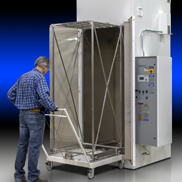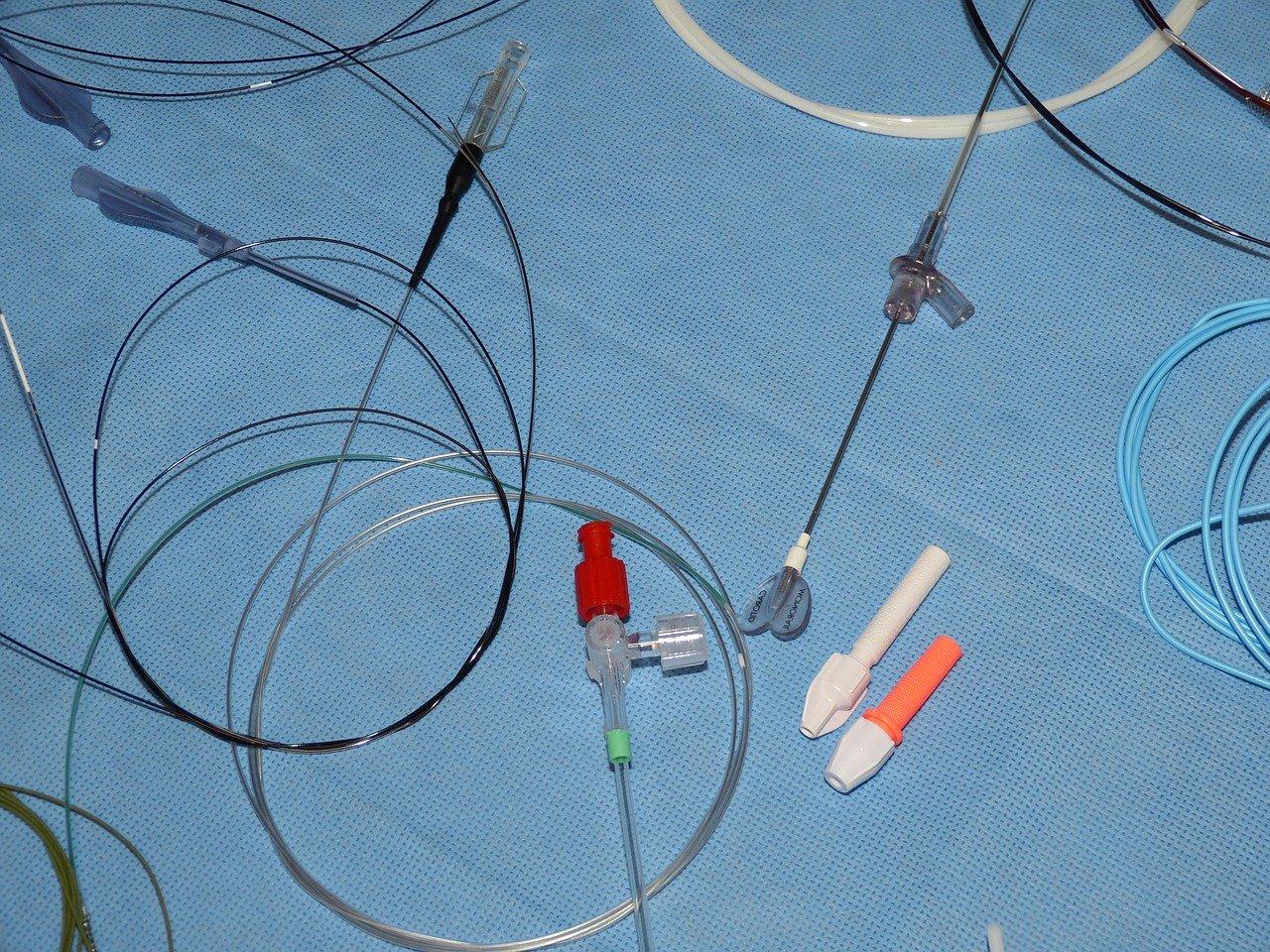Catheter manufacturing is intensely competitive. To survive, catheter companies must produce catheters that meet the stringent demands of doctors and patients. Catheters are typically made from a soft plastic material that allows doctors or other medical professionals to insert these medical devices into patients. Available in a range of tube diameters, catheters support a host of medical procedures, such as replacing a heart valve.
Industrial lab ovens, like Despatch’s PRC2-63 Catheter Annealing and Curing Oven, are critical in helping manufacturers meet the challenging production demands imposed by catheters. The right lab oven cannot only help manufacturers generate high-quality catheters that provide consistently good experiences for doctors and patients, provide value for the manufacturer, and help differentiate a company.
Benefits of Minimally Invasive Catheters
Minimally invasive medical procedures refer to treatment or procedures needing only a tiny incision or inserting an instrument into a body cavity. These procedures, such as laparoscopic surgery, generally use state-of-the-art medical device technology to limit the damage to human tissue when performing surgery. These procedures often need only small “ports” from which the doctor inserts thin tubes called trocars.
Minimally invasive catheters are better tolerated by the human body and provide much better treatment outcomes. Plus, they lower the risk of infection, reduce trauma and pain, limit blood loss, and speed recovery time. Minimally invasive catheters, however, must be safe and precise and conform to diverse morphological structures, thermal conditions, and strength and flexibility criteria. There’s no room for error with minimally invasive catheters.
Main Types of Medical Catheters
The four main types of catheters are urinary catheter tubes, peripherally inserted central catheters (PICC), central venous catheters, and implantable ports. Each type has its specific uses. Urinary catheter tubes, for example, are used to drain bladders, treat urinary tract infections, and deal with retention issues, incontinence, and prostate surgery. They are employed intermittently or on demand.
Catheters are made from various medical-grade materials—red rubber latex, plastic, vinyl or PVC, silicone, latex-free, and so on. Catheter materials must have excellent hydrophilic coatings and come in various lengths and tube diameters (French size). Plus, they feature two kinds of insertion tips—straight and coudé. The choice of materials, French size, and type of insertion tip depends on medical requirements and users’ preferences.
Considerations When Manufacturing Catheters
Critical considerations when manufacturing catheters are specifications, dimensions, functional performance, hole diameter, tolerances, visual criteria, and device maneuverability, as well as flexibility, torque, miniaturization, and antimicrobial resistance. Catheter manufacturers can tailor catheters for cardiovascular, urological, gastrointestinal, neurovascular, and ophthalmic applications by adjusting the production process and changing catheter material.
Length is another critical consideration with catheters. They can be anywhere from 3 in. to over 6 ft. (7.5 cm to 2 m long). While long, minimally invasive catheters are common, shorter catheters are still popular. Both require thermal processing by industrial lab ovens to help meet their requirements. Batch and conveyor ovens, for instance, are often more suitable for shorter catheters. If a catheter has a distal tip that needs thermal processing, a lab oven featuring a slotted door is well suited.
Thermal Processing in Catheter Manufacturing
Lab ovens are ideal for many catheter manufacturing applications. They’re well-suite for curing and drying coatings and linings to protect against urinary tract infections in medical procedures or increase a device’s lubricity to ease the discomfort of insertion. They’re also ideal for thermal curing of adhesive bonding of ports and attachments and for annealing—a critical step that provides variations in the flexibility and hardness of a catheter tube to suit specific medical uses.
Despatch lab ovens are highly reliable and repeatable. They address the variety of needs of today’s catheter manufacturers. The company’s product line includes lab ovens that offer vertical airflow to keep crosswind from blowing tubes around, a tall configuration with a small footprint to save floor space and stainless-steel walls for clean processing, and an oven with a cart and rack for hanging catheters, which boosts throughput.
Below are examples of custom-engineered lab ovens that Despatch has generated to meet a manufacturer’s needs:
- Lab oven explicitly designed for annealing catheters at 175°F for 30 to 60 minutes to stabilize the stresses in the catheter’s material caused by extrusion.
- A large clean process lab oven for curing catheters featuring a stainless-steel interior and exterior to meet the customer’s needs.
- A batch oven that provides consistent and repeatable temperatures and features an array of narrow slots for potting the distal ends of imaging catheters.
- A one-size-fits-all solution (PRC2-63) for annealing and curing 80-inch long catheters with vertical airflow to prevent the tubes from blowing around, with a tall configuration and a small footprint.
- Reflow lab oven for producing braided catheters that fused the lubricious inner liner and braided reinforcement and polymer outer jacket. Braiding strengthens and increases torsion resistance to catheters.
- A modified, 18 cubic foot LBB model lab oven with slots added to the doors of the oven to allow manufacturers to insert trays without opening the oven.
Meeting the Challenges of Catheter Manufacturing
Many manufacturers use standard industrial ovens to meet the challenges of catheter manufacturing. This approach shortens lead time, reduces cost, and provides features that fit standard manufacturing applications. Manufacturers can also modify standard ovens for an application. But sometimes, only a truly custom-engineered lab oven will do. Working with an experienced, knowledgeable oven manufacturer like Despatch can help you meet this need. Despatch’s engineers can help design and produce a custom-engineered lab oven that meets your exact needs.
 Catheter manufacturing is intensely competitive. To survive, manufacturers must meet the challenges of today’s healthcare systems. Doing so often requires manufacturers to produce complex catheter designs. The right lab oven, like Despatch’s PRC2-63 Catheter Annealing and Curing Oven, can help meet the demand for safe and precise catheters. Designed explicitly for catheter manufacturing, Despatch’s lab ovens generate products that provide consistently good experiences for doctors and patients, help produce value for the buyers, and provide a company with a competitive advantage.
Catheter manufacturing is intensely competitive. To survive, manufacturers must meet the challenges of today’s healthcare systems. Doing so often requires manufacturers to produce complex catheter designs. The right lab oven, like Despatch’s PRC2-63 Catheter Annealing and Curing Oven, can help meet the demand for safe and precise catheters. Designed explicitly for catheter manufacturing, Despatch’s lab ovens generate products that provide consistently good experiences for doctors and patients, help produce value for the buyers, and provide a company with a competitive advantage.






